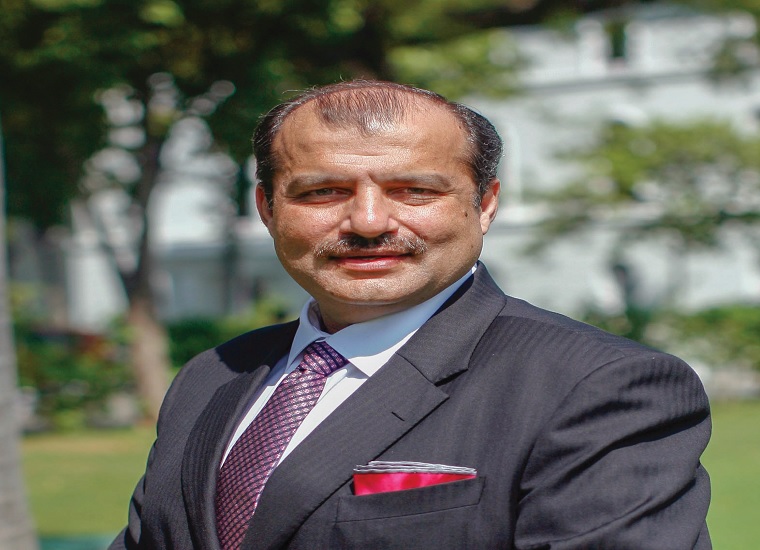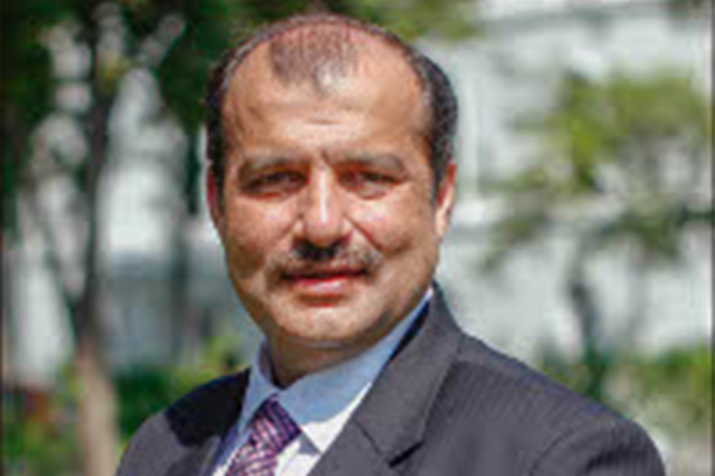Old age homes are often considered negative among Indians. But last few months of pandemic has compelled Indians to seriously reconsider at widespread development of senior living communities. In fact, the unprecedented crisis has prompted many elderly citizens to opt for senior living options provided by government. For instance, a senior citizen couple living at senior community in Jaipur narrates on social media about how they made the right choice to shift in one such community. Unlike them, many elderly people were left to fend for themselves on their own. Many media reports highlighted the ground reality of what elder citizens were going through during early phases of lockdown. For instance, a septuagenarian couple in Lucknow who was living alone experienced many challenges during lockdown period. Managing their own cooking and cleaning without a house help was arduous for them. A survey by Help Age India found that around 80 per cent of elderly citizens didn’t have access to essential items or medicines during the lockdown. On the other hand, there were many cases where family members abandoned elderly people. This certainly has made other senior citizens to rethink their choices of life. This further has translated to spike in the demand for spaces meant for senior living communities. Segregation of senior living as an organised sector Though India is a relatively young nation, the demographics are going to change at some point. A 2018 CII report on the Indian senior living sector projects that Indian elderly population will triple from 104 million in 2011 to 300 million in 2050. While another report by United Nations Population Fund (UNFPA) and Help Age India states that the number of senior citizens in India is expected to grow to approximately 173 million by 2026. Venkatesh Srinivasan, Assistant Representative at UNFPA tells that India has 9 per cent of citizens above 60 years of age. He says, “The number is going to grow rapidly over next few years. But more important issue is of vulnerability of elderly people, instead of increase in elderly population.” Only 30 per cent of senior citizens are economically independent, 52 per cent are fully dependent, while 18 per cent are partially dependent on others for their livelihood. Along with this, poor preparation of long post retirement life is also a prominent challenge when comes to formal workforce. In informal sector, savings and social protection also becomes a factor of vulnerability. According to data from various official sources, increase in life expectancy brings burden of diseases, which can be a challenge for future. 30 per cent of people between the age of 60-79 years and 37 per cent of citizens above 80 years of age have acute morbidities. Out of this, 10 per cent of elderly citizens have issues in doing daily activities. Explaining the misery of current scenario, Srinivasan says, “Despite of several schemes for senior citizens, our studies show that knowledge on these programmes is low among beneficiaries. Even the services for elderly and poor people are fragmented which is again an issue. Banking technology has reached Indian household, but older generation finds it difficult in operating online banking. COVID has further aggravated issues in accessing these services.” Help Age India data also says that 6 per cent of senior citizens live alone. These citizens suffer from loneliness and this has been aggravated during the pandemic period. Studies have established that social isolation leads to depression, suicidal tendencies, and a higher chance of increased inflammatory responses among the elderly. This also exacerbates the vulnerability of elderly who are already suffering from psychiatric or neurological conditions. These all facts and statistics reinforce the need for robust senior care infrastructures and effective services in our country. Given elders above 50 years are more prone to the deadly virus; our healthcare systems should focus more on their health. According to a CII report, the demand for senior care facilities usually goes up to 2 lakhs each year. We can say that India is still at the nascent stage of organised senior living and healthcare infrastructure. As we spoke to Mohit Nirula, CEO of Columbia Pacific Communities, he elaborated on how people these days have become open-minded about opting for senior care living and infrastructure. He tells that with vast improvement in medical facilities, medicines, and treatments, life expectancy is on the increase. This gives us a clear idea about how percentage of senior citizens living on their own will increase exponentially. “The surging number will result in organised senior living becoming not just a juvenile industry but a potent solution for a dire problem in the country,” he adds. Mohit Nirula, CEO of Columbia Pacific Communities As far as urban middle class of India is concerned, parents are increasingly staying on their own and away from their children. This largely happens in nuclear families where careers of their children have taken them away from their home city or country leading to self-sufficiency among elders. He further adds that there is a supply of around 10,000 homes in communities designed for seniors. Also, there are an additional 10,000 homes in various stages of design that will be available for registration in next 12–48 months. The senior care market is currently valued at $12 billion. Globally, the elderly care service market is anticipated to become an industry worth of US$ 1,744.6 billion by 2025, expanding at a CAGR of 8.31 per cent. Covid-19 reinstates development of home for elders The outbreak of COVID-19 has exposed the lacunae in this sector and has highlighted the need of more senior living communities in India. This has impacted its demand in a positive way. “COVID-19 pandemic has accelerated the need for dependable and professional services and solutions for seniors,” said Tara Singh Vachani, Executive Chairperson of senior living and care services provider Antara, another prominent player in market. The company project that the demand for senior living and senior care services is likely to pick up as world recuperates from wrath inflicted by the pandemic. Vachani claims, “Currently with over 20 million elders staying alone, the number is slated to increase in next two decades with number of growing senior population.” On the demand front, Antara’s Noida facility received a very encouraging response from customers, indicating that both the concept and brand resonate among people strongly. “We have already sold one-third of our inventory after the COVID-19 pandemic broke out. In Dehradun too, where we had already sold 70 per cent of the inventory both enquiries and sales have risen,” stated an official statement. According to Antara’s estimates, the demand for senior living housing units is highest in Delhi-NCR (15,050), followed by Mumbai (12,950), Hyderabad (6,200), and Bengaluru (6,000). She further added that over past few years, tier 2 and 3 markets such as Pune, Goa, Dehradun, Ahmedabad, Coimbatore, and Lucknow have witnessed a steady rise in demand. Citing the growth of elderly population as per Census data, she claims, “The upward growth in projections clearly signify the untapped market potential that this segment holds both in metros and tier 1 and tier 2 cities.” Due to COVID-19 lockdowns, Columbia Pacific communities are also seeing a significant hike in queries. Nirula tells us that they have a long waiting list of people who wants to get into senior living communities. “We have waiting list for nine communities with future residents waiting to get accommodation that they can rent or purchase on resale. Another facility—the Virtuoso Club in Bangalore is experiencing unprecedented demand. Sales, since September have exceeded. Organic traffic on website has grown four-fold since the pandemic,” Seeing the rising growth, the company has announced two joint ventures in past months and now has projects namely the Embassy Group (Rs 380 crore) in Bangalore and the Nyati Group in Pune in the designing phase. Sectors related to the senior living market such as real estate is witnessing great traction and investments. A recent report by Anarock says that senior living centres have shed old age homes stigma once attached to facilities for the elderly and are now actively opting for a respectable real estate category. According to the report, southern cities of India are considerably ahead with nearly 65 per cent of overall projects for senior citizens located in the region. Prominent senior living hubs in south India include Coimbatore, Puducherry, Chennai, Bengaluru, Kodaikanal, Mysuru, Kochi and Kanchipuram. The report further states that Coimbatore has maximum number of projects numbering around seven. The city seems to have emerged as one of the top retirement havens in India due to excellent healthcare facilities, trained staff availability, and salubrious climate. The other hotspots for senior living in India currently are Pune and Vadodara in the west and Bhiwadi, Chandigarh, Jaipur, Dehradun, Faridabad and Kasauli in north. In the western region, Pune is the quintessential pensioner’s paradise and currently has at least six projects exclusively for senior citizens. Another prominent player in the senior living market Ashiana Housing is witnessing increase in enquiries and demands for senior living centric properties. Ankur Gupta, Joint Managing Director of Ashiana Housing expresses his thoughts on a blog about the demand triggered by the pandemic. He writes, enquiries for homes, both for rental and purchase have seen the upward curve during COVID-19. “Real estate developers are also looking to diversify their portfolio and offer a more differentiated product mix within their integrated townships. Hence, there is an increased desire to partner with service providers who have the expertise in designing, marketing, serving and providing the healthcare needs for residents of a senior living community,” he adds further. Ashiana Housing has its state-of-the-art senior living facilities named Ashiana Nirmay in Bhiwadi, Ashiana Shubham in Chennai and Ashiana Utsav in Lavasa – Pune. Other factors leading to growth of sector It is clear that outbreak of the pandemic has increased demand for senior living market. But, it is not the only factor behind this gradually increasing trend of shifting to senior homes. One of the most prominent factors that have led to growth of the sector is growing desire of elders to gain their independence where education has a large role to play. Elaborating it more, Nirula tells that Indians have always believed in education is the most important contributor for upliftment living standards. “As a consequence, pursuit of careers and availability of opportunities has taken children away from their parents and their home city. The fact is parents are already staying away from their children. Further, communities designed in accordance with requirement of seniors provide an ideal solution to all their needs. The contrast in the experience of seniors living on their own vis-à-vis those staying in senior living communities has further fuelled the demand for homes within senior living communities in the country,” he says. Another major reason behind consideration of retirement homes is the need to downsize as a senior citizen approaches retirement. Studies elucidate that baby boomers (born between 1946-1964) are mostly driving this trend as they seek more urban style of living. The appeal of amenities and mixed-use development as a service and added component of senior homes are also attracting consumers more. Factors such as better environment, availability of large land parcels, and enhanced access to healthcare are also driving the demand for senior living homes in tier 2 and 3 cities. Nirula further tells us that the potential residents of a senior living facility have complete clarity in their expectations from a senior living community. “More than a home, what they seek is expertise possessed by staff and credibility enjoyed by the service provider,” he adds. While the quality of the asset is taken for granted, future communities will need to be able to deliver on design and daily execution of wellness and wellbeing programmes. Columbia Pacific’s promise of ‘positive ageing’ seeks to deliver that. It an approach that allows residents to embrace life and lead a healthier life. Challenges persisting in future Though the elder care communities from US and Europe were under surveillance after they became epi-centres for the contagion, India’s old age homes and senior communities staved off the virus so far. A study by Indian Institute of Public Health-Gandhinagar on three states namely Maharashtra, Gujarat, and Rajasthan reveal that old age homes in India recorded least number of deaths from coronavirus. Dr. Dileep Mavalankar, Director of Indian Institute of Public Health-Gandhinagar and author of the study stated, “The study indicates that older persons in care homes are somewhat protected from the new coronavirus infection in large part. This is because of protective measures being taken, which includes decongesting homes and sending residents home wherever possible. It also includes stopping all visitors, giving attendants temporary accommodation within the home if needed, sanitisation of all items from outside, and frequent sanitisation of the premises.” The apex body of the sector, The Association of Senior Living India (ASLI), also played a significant role in spreading awareness and keeping communities safe by sharing guidelines and practices to keep senior members out of danger. Although sector has been receiving positive trends, the industry still has miles to go. Considering the large demand-supply gap, there will be occupancy pressure despite the projected growth. Experts opine that construction depends upon population and demand. The need for more economic and customizable senior living options for middle class and lower income class will still continue to be a challenge. Traditionally, most of the senior homes and investors were focused on upper class income and middle-income groups. But others generally couldn’t afford the cost. Overall, occupancy pressures and saturated markets are causing senior living providers to take a serious look at how they can differentiate themselves. Gupta of Ashiana Housing in his blog suggests that developers and players in the sector should focus on designs and infrastructure, services, and support infrastructure. Also, it should provide hassle-free living, in-house meal services, and services that give active lifestyle. A report by the International Council of Active Aging (ICAA) states that the pandemic has presented the industry with a rare opportunity to reassess the sector of senior living. Now that the initial phase of the pandemic is over, stakeholders in this sector are looking forward for the bright future of this sector.
Continue reading “The Pandemic led push to opportunities in the silver economy”




